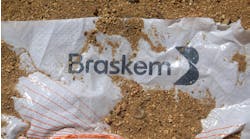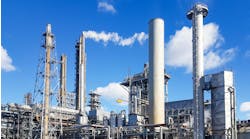Distillation suffers relatively low thermodynamic efficiency but remains the most common way to separate components in a liquid stream. Indeed, the technology accounts for a high proportion of the energy used by the chemical industry. Fortunately, as our cover story “Save Energy in Distillation” points out, plants potentially can increase the energy efficiency of many of their existing columns.
As that article notes, the dominance of distillation for industrial separations stems from a number of factors including that it scales well and doesn’t introduce an extra mass agent that requires removal later. In addition, its long history of successful application and robustness bolster confidence in using the technique.
Development of less-energy-intensive separation methods broadly applicable on an industrial scale ultimately could lead to displacement of distillation at plants. However, such a move realistically isn’t about to occur anytime soon. In addition, replacing most of the vast number of operating columns likely won’t make economic sense.
So, distillation columns will remain a mainstay of processing for the foreseeable future.
Given the prominent and enduring role of distillation and its high energy consumption, we might expect that researchers in academia are devoting considerable attention to ways to enhance the technique. The authors of the cover story commend some professors, namely Rakesh Agrawal at Purdue, Bruce Eldridge, Frank Siebert and Gary Rochelle at the University of Texas, and Ross Taylor at Clarkson, for their work on distillation — but call them notable exceptions to the general disinterest in the technology by engineering school faculty.
Many academic researchers like to focus on what’s trendy, the latest hot topics or, to be kinder, the most dynamic areas of technology. After all, it’s human nature to want to work where the excitement is and where the potential for contributing to major advances seems strongest. In addition, part of the attraction undoubtedly reflects the perception that money is more abundant or easier to get for projects in these areas. That’s definitely true; funding agencies largely ignore distillation.
Fortunately, industrial consortia such as Fractionation Research, Inc. (FRI), Stillwater, Okla., focus on distillation. FRI is 66 years old this month and continues to delve into issues important to industry; it boasts resources such as a 31-ft-high, 48-in.-dia. high-pressure column and a 49½-ft-high low-pressure column with 47¾-in. and 96-in. sections. Its member-driven research on hardware, development of software and correlations, and publication of design handbooks provide a great service to industry, as its more than 80 corporate members (which include operating companies, engineering firms and vendors from around the world) can attest. FRI’s work has underpinned better initial designs and more-cost-effective revamps of columns at plants.
Such consortia bring a strong industrial focus to research and obviously provide real value. However, their limited number of staff and resources restrict what they can investigate. Funding agencies and educational institutions should recognize that the much broader base of researchers in academia should be doing more. While engineering departments at universities certainly face their own staffing and resource challenges and few schools can justify installing columns like the ones at FRI, professors shouldn’t ignore mature but important technology like distillation that offers interesting areas for research that may profoundly impact industry.
Funding agencies and academic researchers should realize there are still opportunities.



